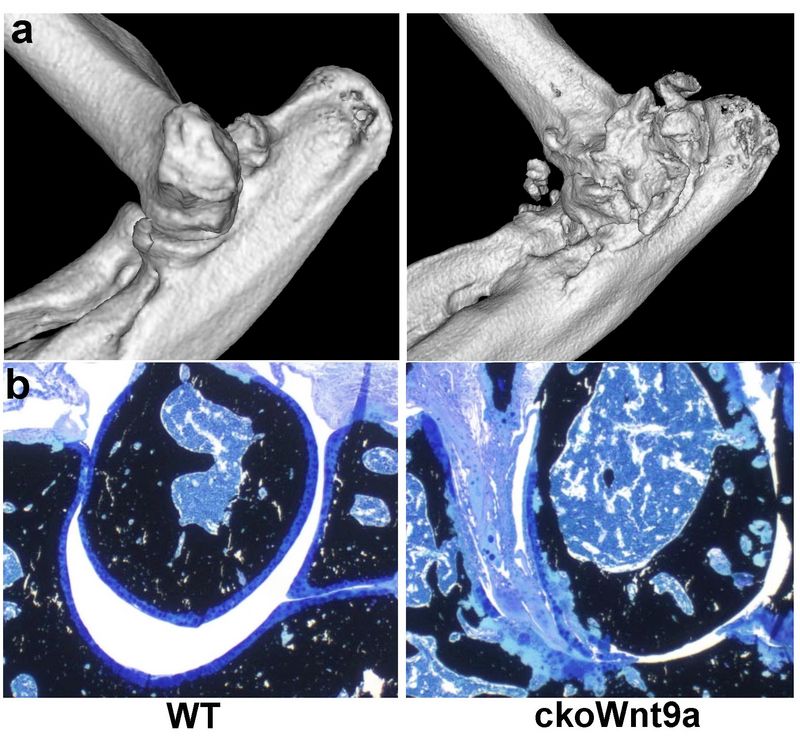Synovial joint development

Wnt9a was identified as a major player for the induction of synovial joint development in chick studies (Hartmann and Tabin, 2001). In the mouse, Wnt9a is expressed in the early joint interzone and, after the formation of the synovial joint, in the articular cartilage and joint capsule cells. Loss of Wnt9a results in ectopic cartilage nodule formation in the humeral-radial joint. In humans this phenotype is known as synovial chondroid metaplasia. Additionally, two other Wnt-genes are expressed in the joint regions, Wnt4 and Wnt16. Wnt4;Wnt9a double-mutant mice show synovial chondroid metaplasia in two additional joints and fusions of carpal and tarsal elements (Später et al., 2006a, 2006b), but not a complete fusion of all joints. In conclusion, the embryonic phenotypes point to a role for Wnts maintaining joint integrity during development. Embryonic signaling pathways are probably reactivated during degenerative diseases of the joint, such as rheumatic arthritis (RA) and osteoarthritis (OA). Hence, we are currently analyzing the consequences of the loss of Wnt-ligands or the signaling pathways in the mature joint. Our preliminary analysis revealed that the loss-of Wnt9a leads to alterations of the adult joints with OA-like features (Figure 3).

